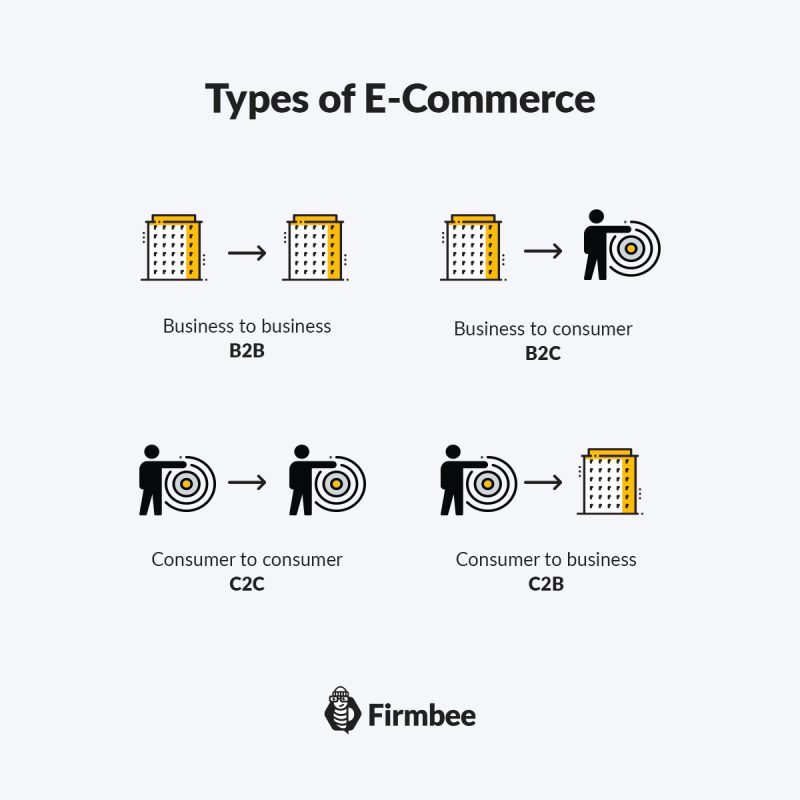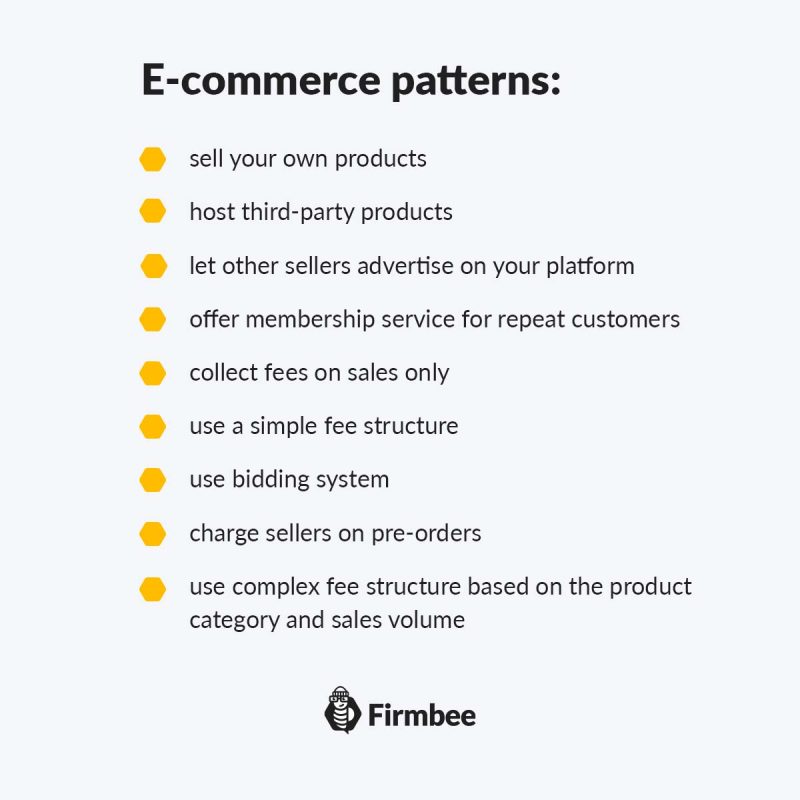What are the main business models in e-commerce? Are there any differences between those models? Is understanding business models important for online business activities? Running an own online shop requires the entrepreneur not only knowledge of the market but specification of the business model. Read the article to find out about basic models used in the corporate world.
4 basic business models in e-commerce – table of contents:
- Business-to-consumer (B2C)
- Business-to-business (B2B)
- Consumer-to-consumer (C2C)
- Consumer-to-business (C2B)
- Business models in e-commerce – summary

Business-to-consumer (B2C)
Accordingly to the type of client, there are four basic e-commerce models: B2C, B2B, C2C, and C2B. The B2C model is a type of relationship between the entrepreneur and an individual client. This type relies on selling products directly to the consumer, who is at the same time the end user. B2C is one of the most popular business models. This model can be divided into types:
- direct seller – client purchase product directly from the online seller
- online intermediary – in such relation there is an intermediary, who is not a real owner of the product (service). Examples of websites that offer this type of service are Trivago, Etsy, and Pakamera
- B2C based on advertisement – the usage of free content on the website attracts users and displays personalized advertisement
- B2C model based on community creation – for example, Facebook creates internet communities, while other websites create an advertisement that uses the right targets setting
- paid – some services, for example Netflix, provide the content to its consumers for a fee. Some of the websites offer free access to materials, but only in their limited version.
Advantages of B2C
Among the main advantages of the B2C business model, there is the short decision-making process – the client is usually the only person that decides against the purchase. With the possibility of global sales, even small companies can appeal to consumers from all over the world. The sellers can use analytics tools such as Google Analytics to gather information about the clients. This knowledge can be used to personalize communication and advertisements.
Disadvantages of B2C
The biggest disadvantage of the B2C model from the point of view of the entrepreneur is the need of acquiring customers. It is more difficult to gain steady clients therefore much of the financial resources have to be allocated for marketing purposes. The other impediment is the high competition in the market.
Model B2C is based mainly on the relationship between consumers and the seller, which means that this relationship has to be maintained regularly. Companies know that the cost of acquisition of new clients is higher than keeping clients loyal, hence companies do everything to fulfill clients’ expectations. For example, the popular way of attracting clients is the usage of loyalty programs.
Business-to-business (B2B)
It is a relationship between two companies. The company sells directly their product (services) to other companies. Such relations may be established between two intermediaries, dealers, suppliers, and other business partners. In the B2B model there are two types of commercial exchange:
- Vertical – is the type of commercial exchange that is carried out within a single sector (branch)
- Horizontal – is a type of exchange, where transactions are made within many branches
Advantages of B2B
One of the advantages of the B2B model is the certainty of the client, which results in a high conversion rate. Usually when business clients search for a product it is because they want to purchase it, not only browse through the assortment as individual clients do. The typical order from business clients is bigger because companies frequently decide to purchase in bulks.
Disadvantages of B2B
The main disadvantage of the model is the extended decision-making process. It is related to the fact that much more decisive persons have to approve the purchase for the company. Clients have to discuss and compare all the available offers with their supervisors before making the last decision. The cost of the product has a significant meaning therefore most of the conversations between the sellers and the buyers are price negotiations.
Consumer-to-consumer (C2C)
C2C is a business relationship between two individual persons. Individuals can sell their products or services with the use of many available selling platforms. They may exchange the items or purchase used items as well. The websites that facilitate the process of selling usually collect a fee for each auction or require some different type of payment (for additional promotion of the product).
Advantages of C2C
The main advantage of the C2C model is related to the availability of platforms that are being used in this model. They have wide coverage and reach many markets therefore the seller may offer his product to a wide range of customers. This type of activity is usually burdened with low costs because there is no need to pay for the own domain or marketing activities. Direct sales bring benefits to all parties involved, because the client may expect lower prices, while the seller still can gain more for his products.
Disadvantages of C2C
From the point of view of the seller, there is no certainty that the product presented in the images is the same as in reality. Some platforms do not guarantee any protection for the buyer.
Consumer-to-business (C2B)
Such a model is the reverse of the traditional sales method. In the C2B relation, individual users deliver products (services) to companies. Model is based on values, that individual client wishes to pass to the company – this may be either: products, services, solutions, or ideas.
Among individuals that offer their services to companies are bloggers that can provide marketing services or photographers that sell their pictures to the companies. Intermediaries, who act between the companies and the physical person represent the C2B relation as well.
Advantages of C2B
The main advantage of C2B is the access to many consumers that wish to offer their services. Thanks to this companies can adjust their prices to the consumers’ needs. This affects positively the price/quality ratio. Good customer reviews build brand credibility.
Disadvantages of C2B
From the point of view of the company, the main disadvantage of C2B is the lack of decisiveness concerning prices because consumers set their values. From the point of view of the consumer to make the cooperation profitable there has to be huge traffic on the website the consumer collaborates with.
There are other business models as well and those are:
- G2B (government-to-business) – in this relation company cooperates with governmental entities and administrative divisions
- G2C (government-to-citizen) – is a relationship between the government and the civilians, the relationship consists of activities related to the electrical trade, such as tax payments, registration of vehicles
- B2A (business-to-administration) – the relationship between companies and government administration offices

Business models in e-commerce – summary
Understanding business models in e-commerce seems to be crucial for online business activities. Online stores and other types of online activities require a better understanding of models used in the corporate world. Besides the most popular business models in e-commerce, there are other less popular forms of cooperation on the market, but in the text we have confined ourselves to the discussion about the most popular, such as B2C, B2B, C2C, or C2B.
That’s all you need to know about business models in e-commerce. If you want to learn more about e-commerce, read this article: 4 best e-commerce analytics tools
If you like our content, join our busy bees community on Facebook, Twitter, LinkedIn, Instagram, YouTube, Pinterest.
Author: Martin Sparks
E-commerce enthusiasts which constantly digs around the internet in order to make sure he hasn’t missed any important information on the topic of starting and scaling profitable online stores.


















